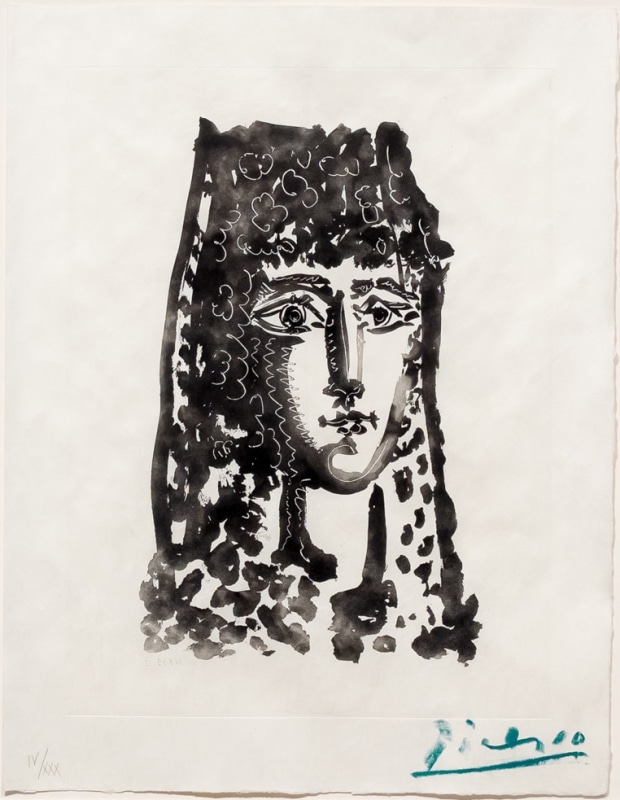
Pablo Picasso (1881 - 1973)
Widely considered the greatest artist of the twentieth century, Pablo Picasso is also its greatest graphic artist. His published prints total approximately 2,000 different images pulled from metal, stone and other media. The cataloguer of Picasso's prints, Georges Bloch, has observed: "Picasso is truly revealed by following the genesis of his work from one date to another. All his phases and styles, which we use as landmarks, are in reality only successive stages of a continuity that constitutes the phenomenon of Picasso."
Picasso spent the first forty years of his work in prints exploring the various intaglio media, experimenting only occasionally with lithography. In the latter part of 1945, the artist took up residence in the Mourlot studio on the Rue de Chabrol, in Paris, and began printing his finest lithographs with the help of this master printer. Lithography offered Picasso the chance to rework an image on the same printing surface and therefore preserve the complete evolution of the composition.
Picasso's graphic art evolved from his early association with such master printers as Eugene Delatre, Louis Forn and above all, Roger Lacouriere. Picasso rapidly discovered a technical and visual vocabulary. After acquiring his own press, he was able to explore the secrets of printmaking in his own fashion. Picasso’s constant experimentation with new materials and techniques adds another exciting element to the appreciation of his prints.
The final triumph of Picasso the printmaker was his development of the linocut. Picasso's invention in 1959 of the one-block technique of linocut printing enabled him to achieve brilliantly and richly colored works on paper. Like wood-block printing the linoleum is cut away from the flat surface of the block except those areas that, when inked and printed, articulate the fields of value in the composition. Softer, more supple and lighter in weight than wood, linoleum can be cut, gouged and slashed with greater speed and much less effort than wood. This material and process suited Picasso's temperament well.
The most important group of prints produced by Picasso was the Vollard Suite, published by the highly influential French publisher, Ambrose Vollard. This suite, published in 1933 and containing dozens of imprinted images, is the greatest formal group of prints produced in the 20th century.
His works are in the permanent collection of virtually every important museum of modern and contemporary art including the Art Institute of Chicago, the Guggenheim Museum, the Hermitage Museum, the Metropolitan Museum of Art, Museum of Modern Art, the National Gallery in London, and the Norton Simon Museum. His works are in the permanent collection of virtually every important museum of modern and contemporary art including The National Gallery of Art, Washington D.C., The Museum of Modern Art, New York, The Museum of Fine Arts, Boston, The Metropolitan Museum of Art, The Art Institute of Chicago, the San Francisco Museum of Modern Art, The Whitney Museum of American Art, among others.
